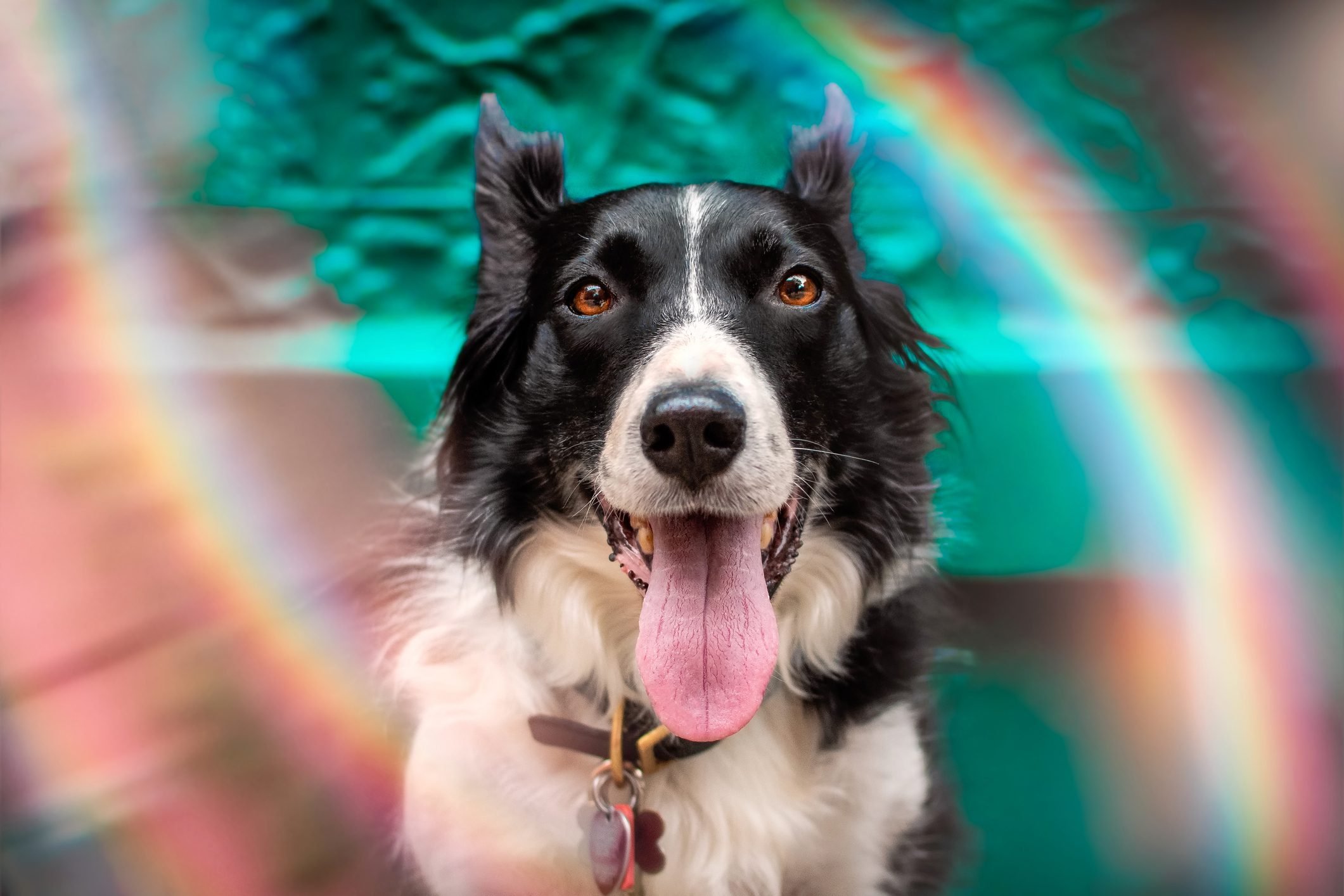How do Dogs See Color? | What is Color Blindness?It is important to determine whether dogs perceive colors the same way as humans and how their perception compares with ours.
Table of Contents
Introduction:
Dogs are often misunderstood as colorblind, but their color perception differs greatly from ours. In their eyes, dogs have only two types of color-sensitive cells, called cones, which allow them to detect and interpret different wavelengths of light.
As a result, dogs can distinguish between shades of blue and yellow more easily than they can between shades of red and green. Purples and pinks may also be difficult to distinguish for them.
Do dogs see color?
Dogs are not colorblind, as popular belief suggests, and they are capable of seeing color, but their perception of color differs greatly from ours.
Dogs have two types of cones in their eyes, which allows them to perceive only a limited range of colors. Humans have three types of cones in their eyes that allow us to see a wide range of colors.
Dogs are capable of seeing some colors, but their perception of color is limited. Shades of blue and yellow are most sensitive to dogs, and they cannot distinguish between reds, greens, and other colors as easily. Purple and pink shades may also be difficult to distinguish for them.
What is color blindness?
It is a condition in which one cannot perceive certain colors or shades due to an inherited genetic defect in the cones in the eye, which detect different wavelengths of light and interpret them as different colors. Color blindness, or color deficiency, occurs when an individual has difficulty perceiving certain colors.
Color blindness can be classified into three types:
Red-green color blindness:
The most common type of color blindness is red-green, which occurs when a person has difficulty distinguishing between red and green.
Blue-yellow color blindness:
An individual with difficulty distinguishing blue and yellow is said to have blue-yellow color blindness.
Total color blindness:
The rarest type of color blindness is total color blindness, also known as monochromacy, and it occurs when someone cannot perceive any colors at all.
Approximately 8% of men and less than 1% of women suffer from color blindness, a genetic condition passed down from parents to children.
How does the canine eye perceive color and the differences between human and dog vision?
A canine’s eye perceives color differently from the human eye because its color-sensitive cells differ in structure and function. In the human retina, we have three cones that detect different wavelengths of light, allowing us to perceive a wide range of colors.
On the other hand, dogs only have two types of cones, so they cannot perceive colors as well as humans do. In contrast to humans, dogs have difficulty distinguishing between reds, greens, and other shades.
Dogs are most sensitive to shades of blue and yellow but less sensitive to reds, greens, and other shades. Dogs may be unable to see all the colors that humans can see, so they may have difficulty distinguishing between certain shades of purple and pink.
How do dogs see color?
While dogs can see color, they perceive color differently from humans. Dogs have only two color-sensitive cells in their eyes called cones, which allow them to detect different wavelengths of light and interpret them as different colors. Humans can see more colors than humans, who have three different types of cones.
Shades of blue and yellow are the most sensitive to dogs, while reds, greens, and other colors are less sensitive. Dogs may also have difficulty distinguishing between certain shades of purple and pink.
Therefore, dogs may be unable to distinguish between certain colors and may not be able to see the full range of colors humans can see.
Factors that can influence a dog’s color perception, including age and breed
A dog’s color perception can be affected by several factors, including age and breed.
Age:
It is natural for dogs to become less able to see color as they age. This is because of the natural degeneration of the retina and other eye parts. The degree to which a dog’s perception of color changes with age depends on the dog’s overall health and the individual dog.
Breed:
Dog breeds may perceive color differently due to genetics in some ways. Research has shown, for instance, that Siberian Huskies and Alaskan Malamutes may be more sensitive to blues and greens, while other breeds may be more sensitive to yellows and reds.
The important thing to remember is that every dog perceives color differently, and even within a breed, perceptions can vary greatly.
The impact of color on a dog’s behavior and how it can be used in training
There are several ways to use color in training a dog, which can significantly impact his behavior.
- Certain colors as cues and rewards in training can be used. Certain colors, such as red or orange, can be particularly useful if you want to train a dog to respond to commands or get its attention in a noisy or crowded environment.
- To signal that a dog should perform a specific behavior a trainer may use a green toy or treat or a red toy to signal that the dog should stop performing a certain behavior.
- Dogs can also be trained to recognize visual barriers, such as colored lines or tape, to mark the boundaries of areas where their behavior must be restricted.
FAQs
What does a dog’s vision look like?
Dogs possess dichromatic vision, which means they can see only two colors — blue and yellow. This means dogs can also see gray tones. Dogs are not able to see red, orange, and green.
What color can dogs not see?
Dogs can see only three colors: blue, yellow, and some shades of gray. See the color chart below for a rough estimate of what colors dogs see. The colors dogs see in a rainbow are dark yellow (brownish), light yellow, gray, light blue, and dark blue. Red, purple (violet), and orange aren’t visible to dogs.
What do dogs see at night?
He is not only better at smelling, but he can also see movement and light in the dark and other low-light situations. As a result of their retinas having a high number of light-sensitive rods, their night vision is enhanced. These rods collect dim light.
Conclusion
The perception of color in dogs differs greatly from human perception, but they can see color. In dogs’ eyes, only two types of color-sensitive cells called cones allow them to detect wavelengths of light and interpret them as colors. Because of this, dogs tend to be most sensitive to blue and yellow shades and are less capable of distinguishing between colors like red and green. Purple and pink shades may also be difficult to distinguish for them.



